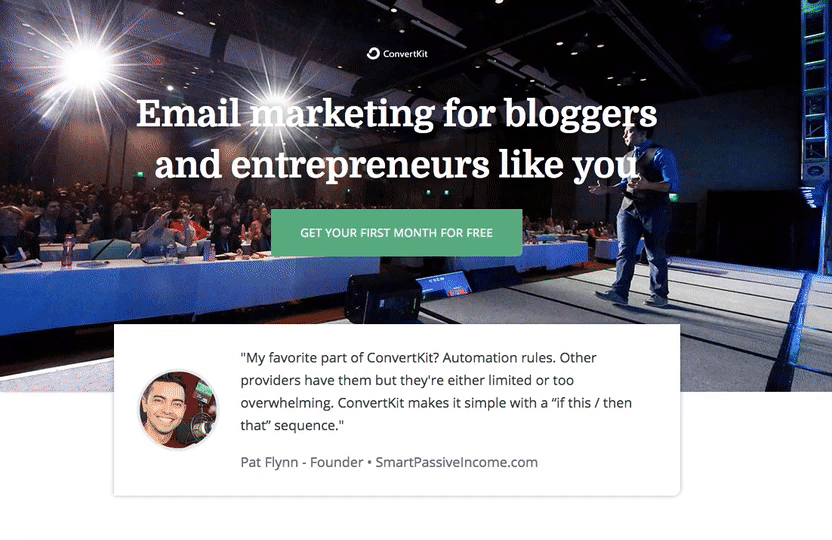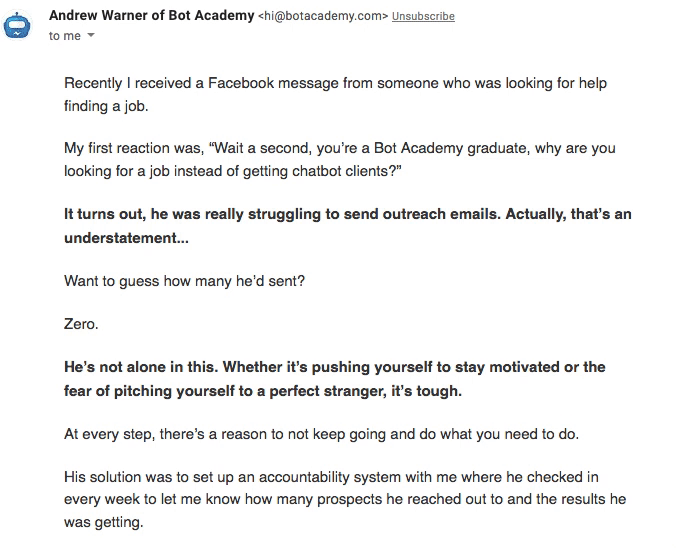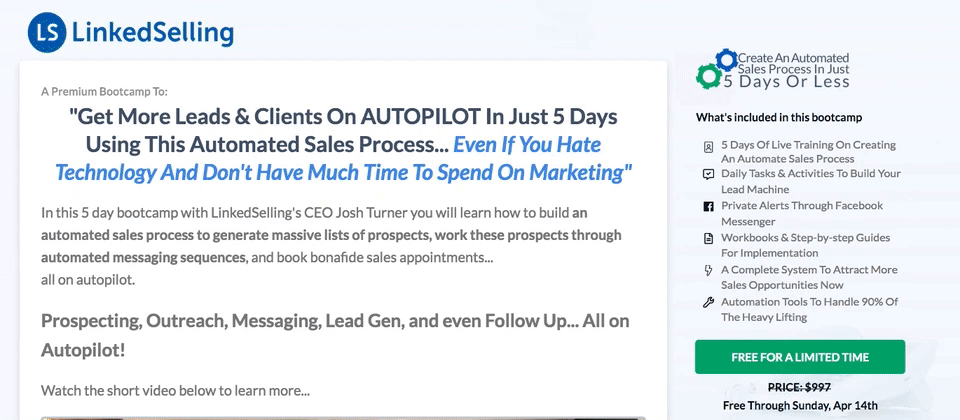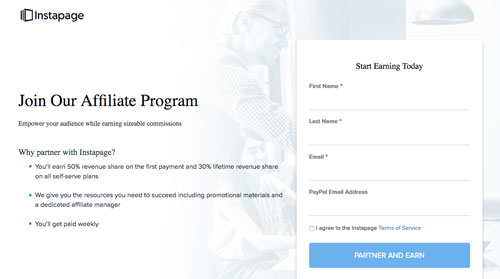Why Affiliate Marketers Should Use Unique Post-Click Landing Pages for Campaigns

Guest blog post written by Tyson Quick, CEO and Founder of Instapage.
Earn money while you sleep.
Affiliate marketers hear this phrase much too often because this is how the world thinks affiliate marketing works. Just sign up for an affiliate program, create some ads, connect them to a web page and start earning commissions passively while you sleep.
This, however, is only half the truth.
Yes, affiliate marketing allows you to earn commissions by promoting a ready-made product or service. But to actually earn commissions you can’t just ensure ad clicks — you have to make sure users sign up for the product/service promoted.
So, you need to optimize the user’s post-click journey, with a unique post-click affiliate landing page.
What is a post-click affiliate landing page?
At their core, every marketing campaign is striving to achieve the same goal — conversions. These conversions could be signups, downloads, or registrations.
Your affiliate marketing campaign is no different.
Compared to your homepage or website pages, which are designed for a browsing experience, post-click affiliate landing pages are conversion-focused. They are not weighed down by featuring multiple offers. They should be created to promote a single offer without any distractions making them the perfect asset to achieve your campaign goals.
Instead of directing users who have clicked your affiliate ad to a website page that’s cluttered with multiple offers, send them to a dedicated page to optimize their post-click journey and increase campaign conversions.
When can you use a post-click affiliate landing page?
You can use dedicated affiliate landing pages any time you promote affiliate ads and links. This is especially true when another primary goal is to maximize ROI from your budget. Without a dedicated place to send people, it’s difficult to realize your potential.
Now, let’s do a run-down on how you can promote offers for your affiliate program and see where affiliate landing pages factor into the equation.
Alexis Teichmiller of ConvertKit, outlines the common ways affiliates promote offers:
- Native ads on the website and in blog links: Native ads allow you to advertise to users without causing banner blindness. Create native ads to run on your website pages and blog to persuade users to click through to access the offer. You can then connect a post-click landing page to the native ad on your website, or a link on your blog.
- Email: Building an email list is the most valuable way to build a community that actually trusts your expertise. Send your email list information about an affiliate product that you know will benefit them. Add a link or CTA button in the email that directs users to a dedicated post-click affiliate landing page.
- Podcasts: If you host a podcast you can mention an affiliate product that you know your listeners can use to their advantage. Create an ad for the podcast page and direct users who click that ad to the exact place that features the product.
- Video: Video testimonials and tutorials on affiliate products are ideal to call attention to offers, and inserting a CTA button in the video that directs users to your affiliate marketing landing page can seal the deal.
- Free courses: These are great to offer value to your users and build trust among your audience. Share links to relevant affiliate programs in the free course and connect all the links to unique pages after the click.
With the definition and when to use them covered, the next section will discuss the reasons why you should use post-click affiliate landing pages for all your campaigns.
The two biggest reasons to use affiliate landing pages
Reason #1: They meet user expectations with message match
When a user clicks through your ad or promotional link, they have certain expectations about what happens next. A relevant affiliate landing page that includes message match meets these expectations.
Message matching is the process of coordinating an ad’s content to the content of a landing page so that the message is reinforced in the prospect’s mind and they know that it’s relevant. It’s all about consistency.
When a user lands on a message matched landing page you gain credibility. There’s no question whether this post-click page is where they were supposed to land or whether they can claim the offer promoted in the ad.
Smart Passive Income’s Pat Flynn demonstrates it well with his ConvertKit affiliate ad on his website:

The ad talks about how the software manages email lists, segments them, and its ease of use. Upon clicking the green CTA button, this landing page greets users with more detail about ConvertKit:

The consistency is evident: The same message appears on the page as it did the ad about why ConvertKit is the perfect tool for building email lists.
The second example here shows an email promoting a boot camp that teaches you how to create an automated sales process in just five days. The email matches perfectly with its corresponding post-click page promoting the same offer. First the email:

Then the landing page with the sales automation boot camp:

When you message match, you’re well on your way to achieving post-click optimization.
Reason #2: Affiliate marketing landing pages have a 1:1 conversion ratio
Conversion ratio is the ratio of outbound links compared to the number of conversion goals on the page. A 1:1 ratio equates to one outbound link (ideally the CTA button) to one goal (ebook, webinar, sign up, etc.).
Dedicated landing pages with a 1:1 conversion ratio encourages prospects to convert into customers by eliminating clickable elements from the page and keeping them focused on the offer at hand.
Instapage’s affiliate landing page has only one place to click — the CTA button on the form, which allows users to sign up for the affiliate program:

Had there been extraneous links like social media, product pages, etc., the user could be tempted to click away from the main goal of this page and never return. With only one outbound link, the user has no choice but to convert via the CTA button or click the “X” in the browser tab to exit the page entirely.
Amplify your growth with optimized post-click affiliate landing pages
Affiliate marketing is not as easy as some make it out to be. Yes, it’s passive income, but to maximize earning potential you first have to take active optimization steps to ensure the ads and promo links are generating conversions.
Connecting all your ads and promotional links to dedicated, optimized post-click affiliate landing pages helps you establish credibility with the user and the offer that is promoted without any distractions – increasing conversions and ultimately increasing business growth.
About the author
Tyson Quick is the Founder and CEO of Instapage, the leader in post-click optimization. He founded Instapage in 2012 after seeing how performance and growth marketers were losing money in underperforming advertising campaigns. Since then his vision has been to create a suite of post-click optimization products that maximize returns through advertising personalization.
Other content you might be interested in:
- Blog: Which Pixel Should I Use?
- Blog: How to Attribute Conversions Using Fingerprint Tracking
- Blog: How to Start an Affiliate Marketing Program